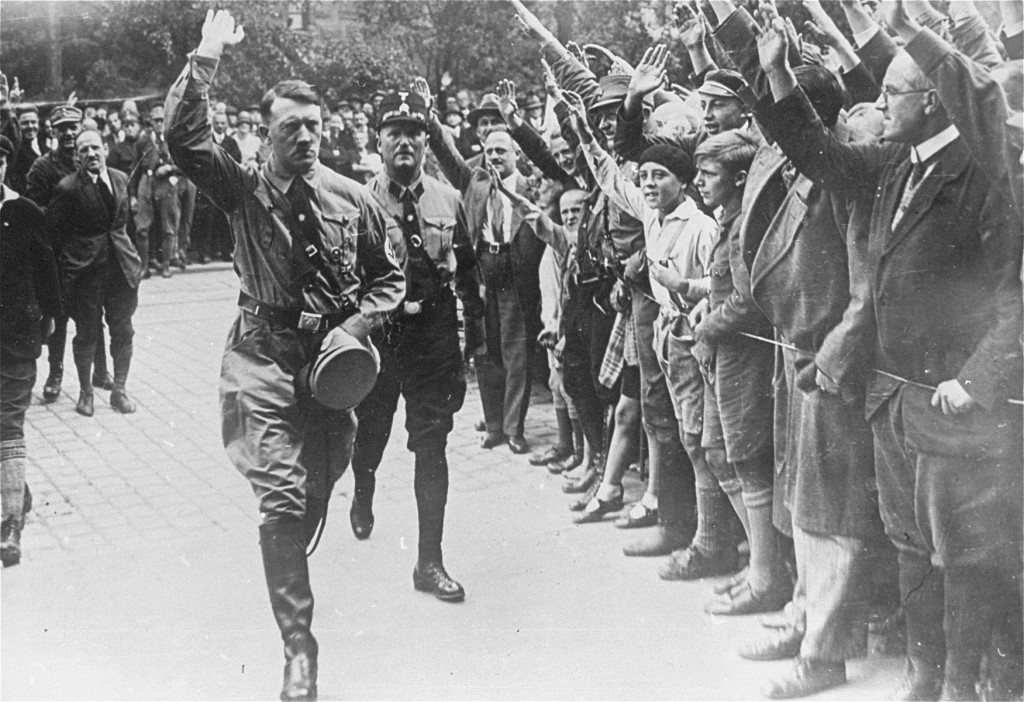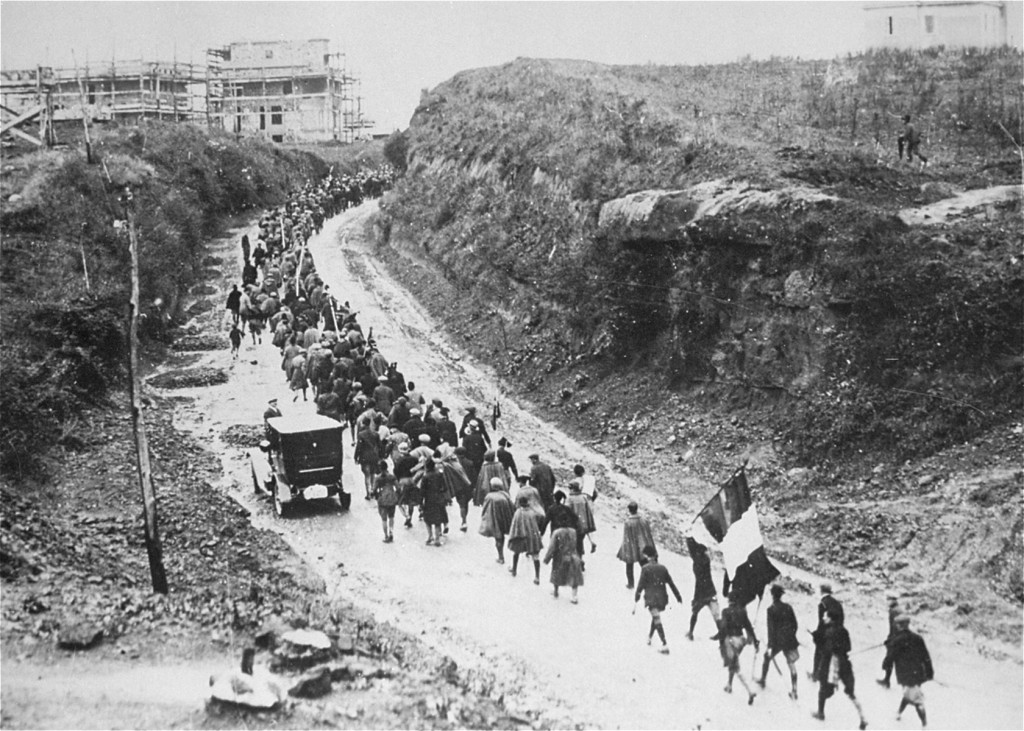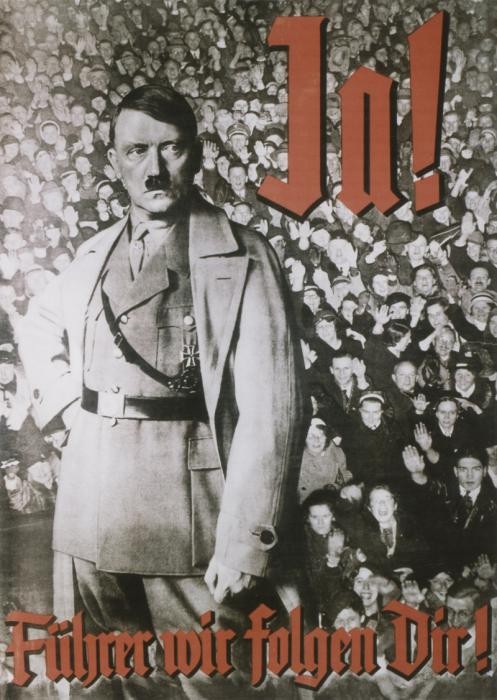
Fascism
Fascism is a far-right political philosophy, or theory of government, that emerged in the early twentieth century. Fascism prioritizes the nation over the individual, who exists to serve the nation. While fascist movements could be found in almost every country following World War I, fascism was most successful in Italy and Germany.
Key Facts
-
1
Fascism emerged as a political movement in twentieth century Europe when Benito Mussolini founded the Partito Nazionale Fascista (National Fascist Party) in Italy in 1919.
-
2
Germany embraced fascism more than any other country. The Nazi government that ruled under Adolf Hitler between 1933 and 1945 was a fascist government.
-
3
Fascism is a far-right theory of government that opposes the political philosophies of the Enlightenment and the 19th century, including democratic liberalism, communism, and socialism.
Definition and Beliefs
Fascism is an ultranationalist, authoritarian political philosophy. It combines elements of nationalism, militarism, economic self-sufficiency, and totalitarianism. It opposes communism, socialism, pluralism, individual rights and equality, and democratic government.
Fascism places the importance of the nation above all else. The unity of the national community is prioritized above the rights of individuals. This leads to an intense interest in defining which groups belong or do not belong to the national body. Fascism is characterized by:
- strident, often exclusionary nationalism
- fixation with national decline (real or perceived) and threats to the existence of the national community
- embrace of paramilitarism
In fascist states, violence is accepted—even celebrated—if it serves or advances the national community. For fascists, violence often has a redemptive or purifying quality.
Fascism rejects the practices of representative or liberal democratic government. It holds that these practices interfere with the expression of the national will. Instead, fascist governments are one-party states led by an authoritarian leader who claims to embody the national will. Fascists define the national will as advancing the interests of the national community. This usually means:
- protecting or elevating the rights of the national community above the rights of those seen as alien
- removing obstacles to national unity and suppressing those seen as challenging it
- expanding the size and influence of the national state
- often, also seeking to expand territory through armed conflict
Origins and Development of Fascism
Fascismhas its origins in the late nineteenth century. However, it became more defined during the turmoil of World War I (1914–1918). Following the war, fascist movements and parties existed across Europe and the United States. The Italian fascist movement, however, was the first to formally organize and stand for election. In 1919, Benito Mussolini founded the Partito Nazionale Fascista (National Fascist Party), and in 1921, he was elected to the Italian Chamber of Deputies. The following year, Mussolini staged the March on Rome. He led 30,000 armed men through the streets to seize power as the prime minister of Italy. He established a dictatorship as il Duce (“the leader”), with no responsibility to parliament.

Mussolini’s success inspired other fascist movements across Europe. In Great Britain, Oswald Mosely met with Mussolini before he founded the British Union of Fascists in 1932. In Spain, Francisco Franco received support from Italy during the Spanish Civil War. In Germany, Adolf Hitler looked to the March on Rome as a model for the fascist takeover he attempted in the 1923 Munich Beer Hall Putsch.
Fascism in Germany
Germany’s collapse in World War I led to significant political instability as the new government, the Weimar Republic, tried to find its footing. Multiple groups emerged to challenge the Weimar Republic, including several fascist organizations. One of those organizations was the Deutsche Arbeiterpartei (German Workers’ Party), which Hitler joined as a member in 1919. In 1920, Hitler became the head of the party. He renamed it the Nationalsozialistiche Deutsche Arbeiterpartei (National Socialist German Workers’ Party, NSDAP), or the Nazi Party.
Despite the reference to socialism and workers in the party’s name, Hitler promoted National Socialism as the complete opposite of socialism and communism. He promoted it as an ideology devoted to advancing the welfare and power of the German Volk (a national or ethnic group defined by its supposed race). The party developed a 25-point platform based on nationalism, antisemitism, and expansion. The program also called for the overturning of the Treaty of Versailles. To advance their agenda, the party formed paramilitary units called the Sturmabteilungen (Stormtroopers, or the SA).
The NSDAP was a small fringe party in Germany in the early 1920s. In November 1923, the Nazis staged their own coup attempt known as the Munich Beer Hall Putsch. The coup began at the Bürgerbräukeller in Munich. The Nazis planned to seize control of the Bavarian state government before marching on Berlin to overthrow the Weimar Republic. They intended to establish a new state based on the unification of the German people, as envisioned in the 25 Points. Unlike Mussolini’s March on Rome, however, the Beer Hall Putsch failed. Hitler was arrested and sentenced to five years in jail, though he served only eight months.
The Nazi State: Putting Fascism into Practice
Following Hitler’s release from jail in 1924, the Nazi Party chose to pursue political power through the elections. In January 1933, Hitler became chancellor. He moved to dismantle the Weimar Republic and build the fascist single-party Third Reich. Following a series of legal, political, and propaganda maneuvers, the German Reichstag passed the Enabling Act on March 24, 1933. The Enabling Act became the cornerstone of Hitler’s dictatorship and destroyed parliamentary democracy in Germany. It allowed Hitler to enact laws without the approval of parliament or Reich President von Hindenburg. By July 1933, Hitler had banned all political parties other than the NSDAP. As the Führer or Leader, he began a process of consolidating power known as Gleichshaltung (coordination) that enforced the Nazi Party’s authority over existing state institutions.

Having achieved total control over Germany, Hitler and the Nazi Party began to implement other aspects of the fascist agenda. They began with the effort to create the ideal German national community defined along racial lines, known as the Volksgemeinschaft. This effort was a two part process. First, it entailed uniting all ethnic Germans in a single German state. Second, it excluded all minorities already within the German state who did not belong in the national community—especially Jews.
In 1938, German annexed Austria in the Anschluss. The Anschluss created the greater German state many German nationalists had dreamed of since 1848. A few months later, Germany seized the Sudetenland region of Czechoslovakia, with the tacit permission of the Munich Agreement. When World War II began in September 1939, one of the Nazis’ central war aims was to expand Germany’s territorial boundaries and influence so that all ethnic Germans could be together and that Germany would have the Lebensraum (living space) that the Nazis believed necessary for the nation to survive and grow.
The Nazis also focused on “cleansing” the national community at home. They worked to eliminate supposed threats to its health and unity. For instance, they imprisoned in concentration camps Germans seen as political opponents, criminally inclined, or “asocial.” They also forcibly sterilized Germans with mental or physical disabilities. In addition, the Nazis moved to isolate and drive out persons considered racially alien to the national community because they supposedly threatened its purity and security. In 1935, the Nuremberg Laws redefined German citizenship, excluding “non-Aryans,” particularly Jews. Escalating persecution and violence isolated German Jews, depriving them of their property, livelihoods, access to education, and markets and public facilities, with the intention of forcing them to emigrate.
The Nazis framed World War II as the ultimate struggle for the survival of the German Volk. They used the war to justify the most radical measures against both internal and alien enemies, including murdering mentally and physically disabled Germans and exterminating all the Jews in Europe.
Footnotes
-
Footnote reference1.
Origin of the term: The term fascism comes from the Latin word fasces, which refers to a bundle of sticks gathered around an ax with the blade pointed outwards. This Roman symbol represented the power of the magistrate. It was a common emblem of governance before the emergence of the fascist movement in the 20th century. For example, there are fasces throughout the Lincoln Memorial in Washington D.C., a memorial built to honor Abraham Lincoln, 16th president of the United States.
Critical Thinking Questions
- What were the major principles of Nazi fascism in Germany?
- Why might aspects of fascism take hold in a country? What long or short term causes might cause people to be attracted to fascism?

